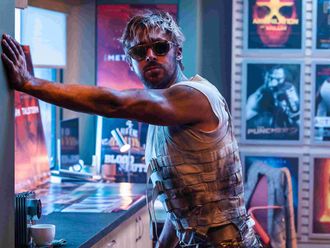
My first thought upon watching Smash & Grab — a documentary about the most successful jewel thieves in the world (the ones behind the Dh14m Wafi diamond heist in 2007) — is a slightly disconcerting one: “I feel like I’m watching Ocean’s 11.”
Why is that disconcerting? Because when I watched Ocean’s 11, I was so charmed by the group of all-star robbers who got away with looting Las Vegas’ most glamorous casino that I, along with the rest of the theatre audience, clapped for them as the credits rolled. Surely things should feel different when witnessing real criminals on real surveillance footage get away with stealing millions of dirhams worth of diamonds.
Filmed over four years, Smash & Grab: The Story of the Pink Panthers intersperses international CCTV footage, archival clips and first-person interviews with detectives, reporters and five members of the Pink Panthers themselves. The Panther crew, an international group but who mainly come from the former Yugoslavia, are depicted as colourful and choppy animated versions of themselves to maintain their anonymity while adding to the intrigue of the film. Their audio interviews, conducted by British filmmaker and journalist Havana Marking, are partially voiced by the real Panthers and partially retold by actors.
‘Mike’, 48, and a female accomplice delve into the process behind their elaborate, quick heists (any job requiring more than 22 seconds to finish would be dangerous, according to one Panther). The woman of the gang — and there’s always just one — “has to be intelligent, beautiful, and she has to love money”. She dresses extravagantly in Chanel, Burberry, or any other high-fashion brand and arrives at the targeted jewellery shop about a month in advance to ‘scout’ it — memorise the layout by sight. Then, another member of the gang sketches the shop interior from her observations. From there, they plan, and when time comes, they conduct the actual ‘smash and grab’ — a method of smashing into glass displays (or sometimes safes, which they call ‘kittens’) to grab jewellery, stash it in their bags and be on their way.
Over the course of an hour and a half, the film gives a glimpse into the eastern European political turmoil in the mid-’90s which led to violence, murder and a bleak lack of resources that forced many into crime. This, Marking believes, was what led to the start of the Pink Panthers in 2000 — something that Mike corroborates. Flicking between Switzerland, France, Spain and, ultimately, Dubai, Marking emphasises the global presence of these criminals, some of whom have found themselves behind bars and some of whom remain at large.
Despite some gratuitous nudity and bloodied bodies, which seem to be featured more for shock factor than anything else, the documentary does a decent job of fitting a lot of information into a relatively short amount of time. Marking has insisted that she doesn’t rely on sensationalism, but that’s hard to believe, especially considering the adrenaline-pumping, carefully placed music choices and sound effects. The drama, mystery and rush of the heists are what make the documentary fascinating.
In the end, we are shown the criminals paying the price for the stolen riches they’ve blown through — they live on anxiety medication to alleviate paranoia or spend their days praying for forgiveness and mourning lost love. The knowledge of this, maybe, is what is supposed to counteract the near glorification of the Panthers’ crimes throughout the rest of the film.











